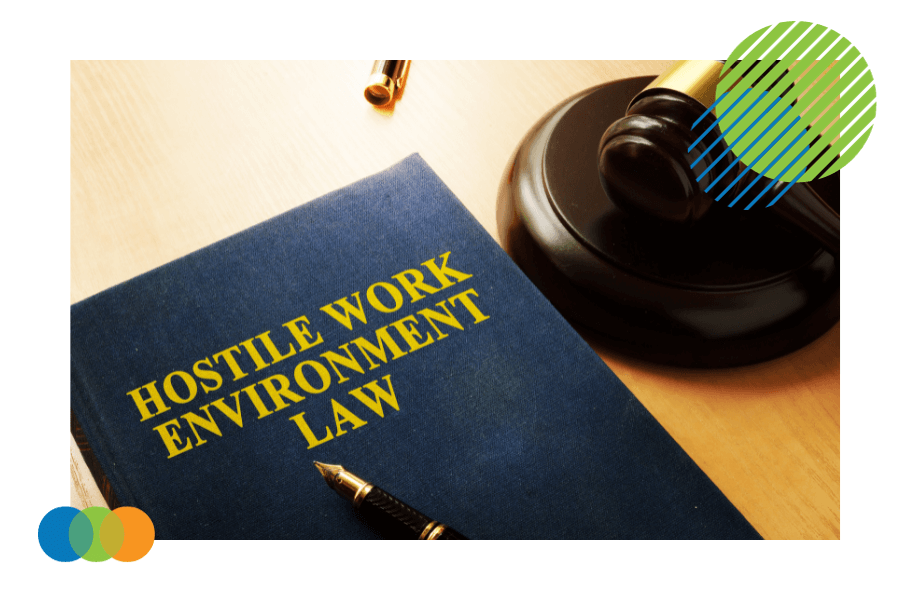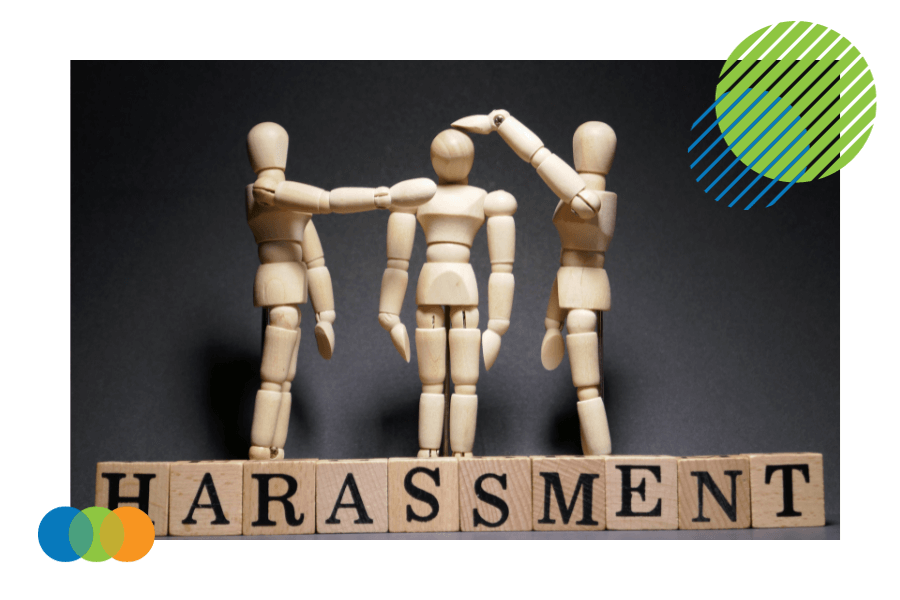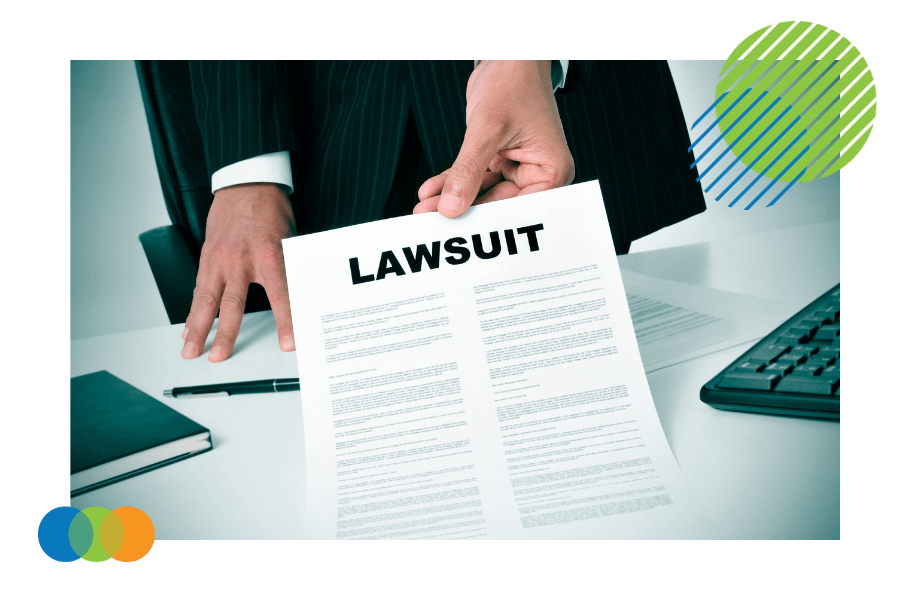 |
Written by Liz McDermott |

Updated on 11/17/2023
In the intricate web of workplaces, there exists a concept that can significantly impact the well-being of employees: the hostile work environment. This article aims to demystify this term, shed light on its legal implications, and empower regular people to recognize and address a hostile work environment.
If you or a colleague feels emotional distress going to work due to the offensive behavior of others, then there's a good chance you have a hostile work environment. Let's learn more about the legal definition of a hostile work environment.
What is a hostile work environment?
At its core, a hostile work environment is more than just a challenging or unpleasant workplace. It is an environment where discriminatory or harassing behavior creates an atmosphere that makes it difficult for employees to perform their job duties comfortably. This can encompass various forms of mistreatment, from offensive comments to more severe forms of harassment.
Legal Definition
Legally, a hostile work environment is defined as a workplace in which unwelcome behavior based on protected characteristics creates an intimidating or offensive working environment. It's crucial to note that the behavior must be pervasive and severe enough to alter the conditions of employment and create an abusive working atmosphere.
The legal requirements for a hostile work environment include:
- The actions or behavior must discriminate against a protected class, such as race, gender, religion, sexual orientation, national origin, age, or disability.
- The behavior or communication must be pervasive, lasting over time, and not limited to an off-color remark or two that someone found annoying. These incidents should be reported to Human Resources for intervention.
- The problem becomes significant if it is all around a worker, continues over time, and is not investigated effectively enough to stop the behavior.
Hostility in the Workplace
Hostility in the workplace extends beyond isolated incidents of rudeness. It involves persistent, harmful behavior that interferes with an employee's ability to perform their job. This can include verbal abuse, offensive jokes, intimidation, and any conduct that fosters a hostile, intimidating, or offensive work environment.
Toxic vs. Hostile Work Environments
While the terms "toxic" and "hostile" are sometimes used interchangeably, they carry distinct meanings. A toxic work environment generally refers to a workplace marked by negativity, gossip, and poor morale. On the other hand, a hostile work environment is legally defined and involves behavior that violates anti-discrimination laws. Toxicity may contribute to a hostile environment, but they are not synonymous.

Types of Sexual Harassment Contributing to a Hostile Work Environment
In the realm of hostile work environments, it's crucial to address specific forms of sexual harassment that can create an atmosphere rife with tension and fear. Unwanted sexual advances, requests for sexual favors, and offensive comments or jokes of a sexual nature are all examples of behavior that can contribute to a hostile workplace.
Moreover, creating or circulating explicit materials, such as unwelcome emails or images, can further exacerbate the hostile environment. Recognizing these forms of sexual harassment is vital for employees and employers alike to foster a workplace culture where everyone feels safe, respected, and able to perform their job duties without the shadow of inappropriate behavior.
Employers must be proactive in addressing and preventing sexual harassment, as it not only damages the well-being of employees but also exposes the organization to legal liabilities. Promoting education and awareness about these issues is a key step towards cultivating a workplace where individuals can thrive free from the fear of sexual harassment.
Sexual Orientation
Sexual orientation-based harassment is another distressing facet that can contribute to a hostile work environment. The impact of a hostile work environment based on this type of harassment can be particularly profound for members of the LGBTQ community. When individuals face discrimination, unwelcome conduct, derogatory comments, or exclusion because of their sexual nature, it creates a climate of fear and anxiety that hinders their ability to engage in the workplace fully.
The EEOC Employment Act clearly states that intentionally and repeatedly using the wrong name and pronouns to refer to a transgender employee could contribute to an unlawful hostile work environment. This is a violation of Title VII of the Civil Rights Act. LGBTQ employees may experience heightened stress, emotional distress, and a sense of isolation, which can significantly affect their mental health and overall well-being.
It's imperative to recognize that laws protect against gender identity discrimination. Employers are responsible for fostering an inclusive environment that respects the diversity of their workforce.

Behaviors Considered Criteria for a Hostile Work Environment
Identifying behaviors contributing to a hostile work environment is crucial for understanding one's rights. Discrimination, harassment, and retaliation are key components. This can manifest through offensive comments, derogatory remarks, unwelcome physical contact, or exclusion based on protected characteristics. It's important to recognize that isolated incidents may not meet the legal threshold; rather, the behavior must be persistent and severe.
Signs of a Hostile Work Environment
Recognizing the signs of a hostile work environment is the first step toward addressing the issue. Persistent tension, increased employee turnover, a general atmosphere of fear or anxiety, and a decline in work performance are indicative of a potentially hostile environment. Paying attention to these signs empowers employees to take action and seek assistance when needed.
Examples of Hostile Behavior at Work
Hostile behavior can take various forms, making it crucial to be aware of the potential signs. Examples include racial slurs, unwarranted criticism, offensive jokes, exclusion based on gender or other protected characteristics, and the spreading of false rumors. Understanding these examples helps employees differentiate between normal workplace conflicts and behaviors that cross legal boundaries.

Can Employees Sue for a Hostile Work Environment?
Yes, employees have the right to take legal action against their employer if they believe they are working in a hostile environment. However, following established procedures, such as reporting the behavior to human resources or a supervisor, is essential before pursuing legal action. Consulting with a labor lawyer can provide guidance on the best course of action based on the specific circumstances.
Anyone can create a hostile working environment, including supervisors, an agent of the employer, a colleague, or even a non-employee. To prevent incidents that prove a hostile work environment exists, organizations should ask themselves:
Do your employees know what to do if they find themselves in a hostile working environment?
If an employee is experiencing a hostile work environment, they need to ask the offender to stop this behavior. If the employee finds this difficult, they should ask HR or a manager for assistance. These will also show that you asked the offender to stop their unwanted attention. The offender must be notified that their behavior is inappropriate and won't be tolerated. In the majority of cases, the behavior will stop.
Do your employees and supervisors understand what constitutes a hostile work environment?
To be held liable for harassment that occurs between two employees, it must be shown that the employer either knew or should have known about the situation and did not take steps to prevent it from occurring. A hostile work environment can also be created for other employees who were not actually the target of the behavior. Anyone can be made to feel uncomfortable by inappropriate behavior in the workplace if the employer does not take immediate steps to stop the situation once it has been brought to light. If the supervisor is the harasser, the employer can typically be held liable by default.
Harassment Prevention Training Records
All employers may want to maintain records on employee harassment prevention training to avoid claims of non-compliance. If training is mandated, failure to provide it as required will make an employer much more vulnerable to liability should an employee sue in court for discriminatory harassment. Where unlawful workplace harassment is found, ignoring the training mandates opens an employer to punitive damages, often several times greater than the employee's compensatory damages.
How to Preventing Hostile Work Environments
Employers play a crucial role in preventing a hostile work environment. Implementing and enforcing clear anti-discrimination policies, providing regular harassment prevention training and diversity and inclusion education, and fostering a culture of open communication are key steps. Promptly addressing the issue when an employee complains and taking corrective action demonstrates a commitment to maintaining a healthy workplace.
Conclusion: Knowing What Constitutes a Hostile Work Environment is Vital
Understanding what constitutes a hostile work environment is vital for employees navigating the complexities of the workplace. Armed with knowledge, individuals can recognize the signs, differentiate between toxicity and hostility, and take appropriate action to protect their rights. Employers, too, must proactively work towards creating a positive and inclusive workplace, ensuring that everyone can contribute their best without fear of discrimination or harassment. By fostering awareness and accountability, we can collectively strive toward workplaces that are not only productive but also respectful and supportive.
For more information, please contact us to inquire about our Sexual Harassment & Discrimination Prevention training.
